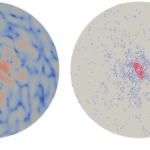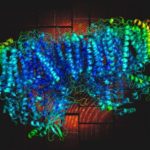A cross-disciplinary effort by Berkeley Lab scientists has yielded a new algorithmic approach for determining 3D molecular structures from single-particle X-ray free-electron laser (XFEL) imaging. Peter Zwart of the Molecular Biophysics & Integrated Bioimaging Division (MBIB) worked with James Sethian and Jeffrey Donatelli of the Computational Research Division’s Mathematics Group to create the multi-tiered iterative phasing (M-TIP) framework, which uses advanced mathematical techniques to extract nano-scale biological structures from sparse and noisy diffraction data. A paper detailing the approach was published in the Proceedings of the National Academy of Sciences.
Biosciences Researchers to Support Two Exascale Projects
Biosciences researchers will contribute their expertise to two new projects, “Data Analytics at the Exascale for Free Electron Lasers” and “Exascale Solutions for Microbiome Analysis,” funded by DOE to develop cutting-edge research applications for next-generation supercomputers as part of DOE’s Exascale Computing Project (ECP), a component of President Obama’s National Strategic Computing Initiative that intends to maximize the benefits of high-performance computing for U.S. economic competiveness, national security and scientific discovery. ECP announced its first round of funding on September 7 with the selection of 15 application development proposals for full funding and seven proposals for seed funding.
Was this page useful?





